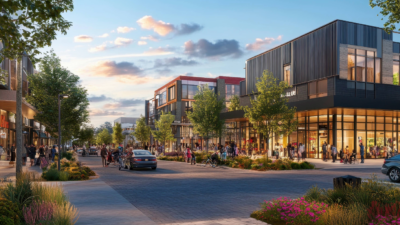The retailization of healthcare is a much-discussed trend in medical real estate circles. Urgent care and ambulatory care facilities are a low-cost alternative to hospital emergency rooms, where escalating overhead costs and long wait times are the norm, and consumers are increasingly using retail clinics and urgent care centers as their first point of entry to the healthcare system. As a result, the same criteria that influence where retailers decide to locate are now being used in the health care industry.
Plus: Health systems driving leasing activity | Top landlord leasing mistakes
In addition to the growing number of outpatient facilities sprouting up in suburbs, free-standing emergency room operators have entered the market to fill a niche: emergency services outside the traditional hospital campus emergency room. There are approximately 400-500 free-standing emergency facilities in 40 states throughout the U.S. and Texas is the epicenter of the free-standing emergency department facilities.
Also: Craft breweries bring new life to old spaces | How corporate real estate drives earnings, culture and brand
Chances are that if you live in one of Houston’s popular suburban neighborhoods, a new free-standing emergency room facility has recently been built nearby by operators such as Texas-based Adeptus Health (First Choice Emergency Rooms), Neighbors Emergency Centers and others. The Texas Freestanding Emergency Medical Care Facility (FEC) Licensing Act was passed into law in 2009, and since the growth of the number of these facilities has continued to accelerate.
Unlike urgent-care centers, which are outpatient clinics that treat a variety of illnesses and injuries but not life-threatening conditions, these free-standing emergency centers are licensed by the state to provide emergency services to patients at the same level as a hospital emergency room. They are required to operate around the clock, are staffed with ER physicians on-site at all times, and provide diagnostic and imaging services that are not required for urgent-care centers.
Free-standing emergency departments originally emerged to serve people in rural areas where access to emergency care wasn’t readily available, but the trend today is to provide convenient access to suburban demographics in an effort to increase market share. The site selection process for free-standing emergency locations is very similar to how a retailer such as Starbucks, Walgreen’s or CVS would evaluate new locations. Population growth, rooftop density, traffic counts, income levels, insurance payer mix as well as property visibility, signage and access serve as criteria in selecting optimal locations.
Today the most advanced healthcare real estate providers are working with their clients as partners, combining the health systems’ critical demographic and patient data with GIS systems and incorporating these data sets into site selection.
Learn more about Colliers Healthcare Real Estate Services.
Coy Davidson is Senior Vice President of Colliers International in Houston. He publishes The Tenant Advisor blog.

 Coy Davidson
Coy Davidson

 Shawn Janus
Shawn Janus
 Malcolm Randolph Jr.
Malcolm Randolph Jr.
 Brian Bruggeman
Brian Bruggeman